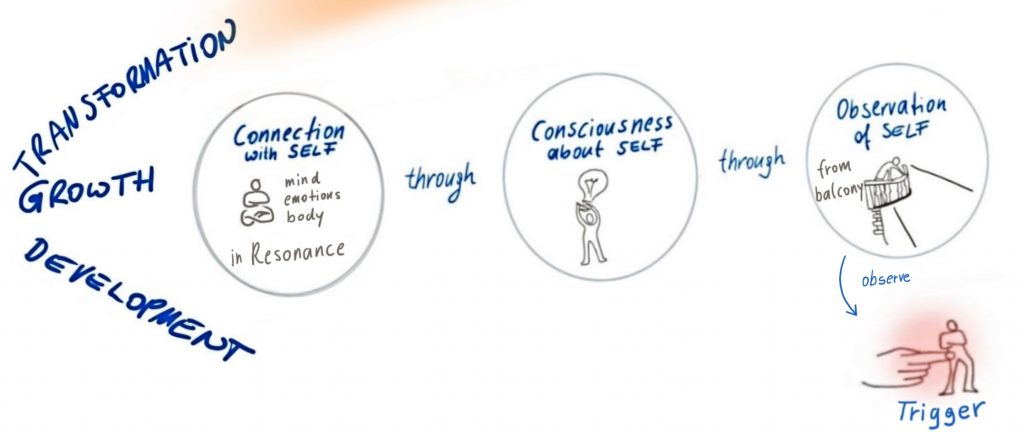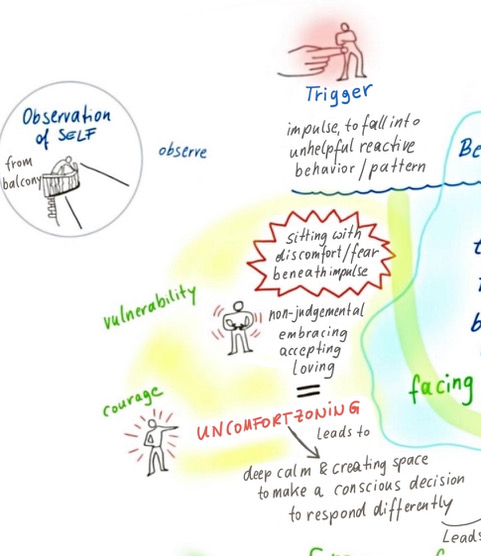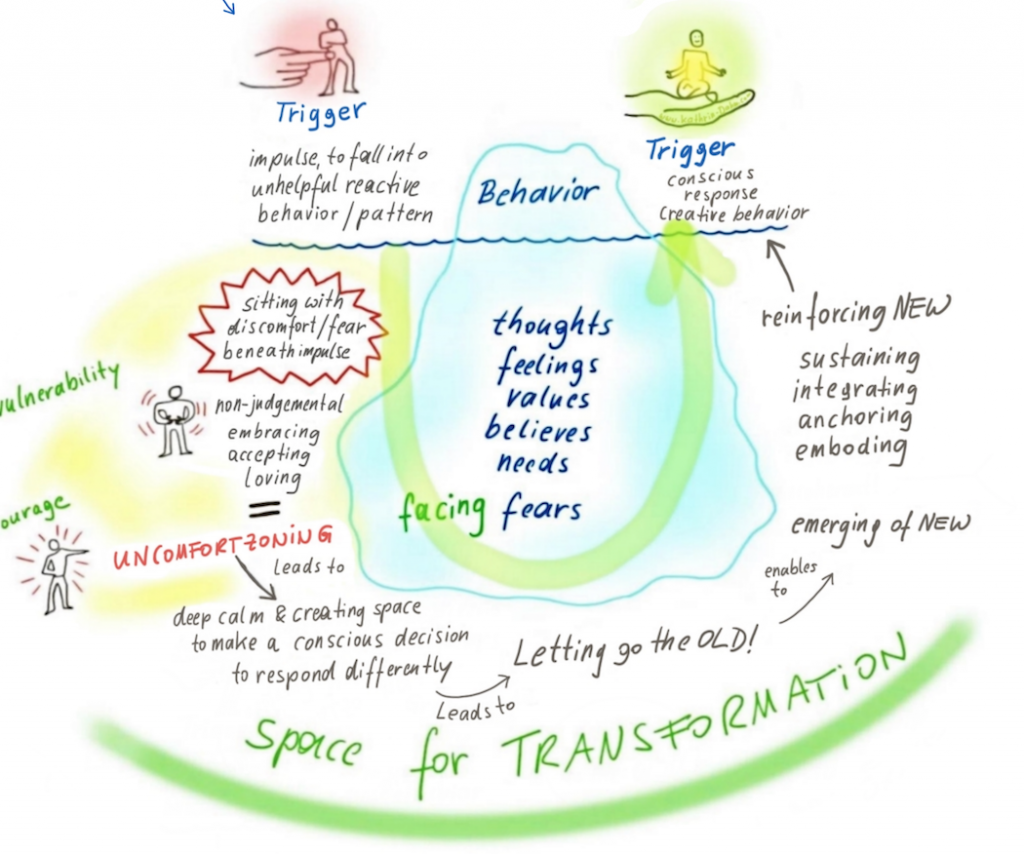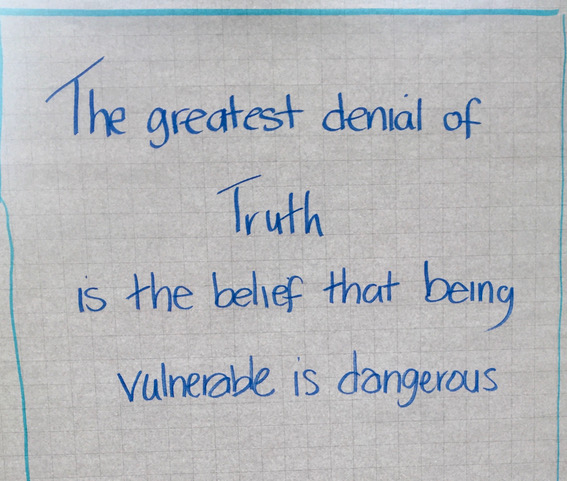We are social animals, it’s all about relationship and connection. The major source of healthy and fulfilling relationships, but also of friction and decline, is how we interact. It doesn’t make sense to point your finger at others with the attitude “if he/she only would behave differently, then we wouldn’t have an issue”.
It all starts with ourselves. Only when we are connected with ourselves, we can truly
connect with others.

But what does this concretely mean? Let me tell you a story.
It was a beautiful day in May somewhere in the Netherlands. I was participating to a training and we just had a break. I stepped out of the building, looked to the right and my heart made a jump. My fellow students stood together in a circle and demonstratively turned their backs on me. My body went through a heat wave, it felt as if someone was stabbing a knife into my heart, my thoughts were racing “they don’t want me with them”; As if remote controlled, I just turned left and walked away from the group with a deliberately slow, relaxed gait. However, it raged in me, a deep, deep sadness discharged into tears. I am not worth being part of them, was my self-talk. After a short walk I had calmed down again.
The whole training dealt with the topic of behavioral transformation and, what a coincidence, exactly after the break it was about how coaching can support behavioral shifts in people. Lisa, our seminar leader, looked for a volunteer to do a coaching demonstration with. Wasn’t that a great opportunity to take a closer look at what I was experiencing earlier? I went for it.
The coaching took place in a fishbowl style, meaning Lisa and I were in the center, and the other 25 seminar participants were sitting around us as silent observers and held the energy. I was pretty nervous. “So, what is it you would like to shift?” Lisa asked me. I shared my perception of the situation from the break and how the physical turning away from the others had triggered my reactive buttons.
The shift I desire is instead of feeling rejected, and as a consequence closing down and disconnecting, I’d love to feel belonging, opening up and staying in connection in situations like that.
I said. Lisa digged deeper. “So what is the behavior you find yourself doing that isn’t working?” “Well, just turning away and fleeing from the situation doesn’t help.” I stated. “So what would be the outcome if this behavior continues?” she asked. “I would stay isolated, lonely.” I shared how sad I felt in the pause and how the voices in my head were telling me the story that I am not worth it spending time with. “Connection is super important to me” I said, “but I believe that I need to earn it! I am not worth being in connection with others for my own sake only.”

We sat in silence for a while. The words I had just said were slowly landing in myself. I felt this deep sadness again and how it constricted my chest and throat. “So, what is the life experience that formed this belief?” Lisa continued gently after a while. “Oh, well, it feels like this is a very old friend of mine.” I responded. “For as long as I can remember, turning away was the default reaction of my mum when things were not going the way she wanted. Sometimes she could ignore me for days, not because she was so mean, she just hadn’t learned and experienced it herself to deal with such a situation differently, she simply was caught in herself.” Lisa digged deeper. “So, what were the drawbacks of this life experience for you?” I started to list. Lisa encouraged me to keep going until I really couldn’t think of anything anymore. Things just came up as I spoke, and I hadn’t been aware of many of them before. The list was really long, but it felt incredibly relieving to speak it out loud. “Ok,” Lisa stated “now let’s see what the benefits were of this life experience.”
Benefits? Really? It took me a while to warm up, but then it started to bubble.
I’m a positive person, see the learning present in every situation, I can be focused, persistent, am good in being with myself, love supporting people, am a good listener, am an independent soul, made my career, take courageous decisions… the list got even longer than the one before. I was surprised. And I felt energized. “So, who have you actually become as result of your life experience?” Lisa asked. “A pretty strong woman!” the words just came out of my mouth. “Actually, I AM enough. There’s nothing to be earned.“ I had to smile. I took a deep breath and felt how my chest opened. Lisa didn’t let me off the hook. “So, put yourself back into the situation of this morning and connect with this new “knowing”, what feelings and thoughts come up?” I closed my eyes and tuned into the situation again with my truth ‘I AM enough’. I step out of the building, look to the right and see the fellow students standing together in a circle. I don’t even think about it, I just go there and join the circle, they naturally integrate me in the conversation they are having, everyone is smiling, having fun. I feel joy and lightness, “I really enjoy being with them” my inner voice says.

This fishbowl coaching took place 6 years ago. It was eye opening to me at that time and gave me a big lesson:
AWARENESS creates CHOICE.
Lisa put me on a ‘balcony’ so to speak, from which I could observe and sense into myself, and become aware of my own reactive pattern and the underlying limiting belief. She created a space for me in which I expanded my self-consciousness on a deep level and could consciously choose to do things differently.
The Coaching was super because it got me a deeper understanding for my own mechanism.
Now it was about proving my awareness in reality, to remain conscious in the very moment when being triggered in my day to day life.
This was and is not trivial, it takes continuous presence, practice and patience.
When feeling rejected, for example, I still very often have the impulse to withdraw, to disconnect from people as a mechanism to protect myself from the expected pain. Recently, for example, I was involved in a client project in which I was positioned as a back-up solution for a client workshop. I mean back-up solution, come on. That’s a message in itself, right? I felt anger, but even more fear that spread in my chest. “I knew it, I’m not good enough!” was my instant self-talk kicking in and I felt the impulse to completely disengage, I literally felt how my energy was fading. But I resisted my impulse to fall into my typical reactive behavior of withdrawl. I took a couple of deep breaths. Then I consciously sat with and tuned into my discomfort and fear, and the related bodily sensations. I didn’t try to push them away but allowed them to be and embraced them. I realized how my mind, feelings and sensations calmed after a while and my impulse to withdraw faded. Instead I connected with my colleague and simply asked what the reason for this decision had been. Guess what, it had nothing to do with me at all.
So, here is my second big lesson: When triggered, do everything to resist the impulse to fall back into your typical reactive pattern! Practise, practise, practice!
Sit with, embrace and integrate the underlying discomfort and fear, and the related bodily sensations until you calm, because this is what creates the space for conscious choice, and thus for transformation. It’s what I call “uncomfortzoning”.

And this leads to my third big lesson:
the more you practice resisting your reactive impulses, the more often you succeed until it becomes common practice at some point.
This knowledge is based not only on my subjective experience, but it has been proven in neuroscientific research that the more you practice new behavior, the more automated it becomes as new pathways are created in the brain. Not to forget the rewarding feeling of deep joy and satisfaction each time you succeed to resist your reactive impulse.
So how does all this now relate to healthy relationships?
As we said at the beginning, a healthy relationship is determined by how we interact, and thus by our capability to connect and tune into another person. However, only when we are connected with ourselves, we can truly connect with others. The capability to be present and mindfully transform our own reactive impulses is the pre-requesite for living healthy relationships. It enables us to solve challenges constructively together, while staying connected, instead of reactively jumping into each others faces or disconnect when the going gets tough.

To truly connect with someone means to courageously show ourselves in our entirety with all our vulnerabilities. And it means to provide a safe space and to hold this space for others in full presence, to go in resonance with them and really listen, so that they can show themselves fully.
If we show this kind of respect and compassion when relating with each other, we can look forward to deep, productive, joyful and lasting relationships.


